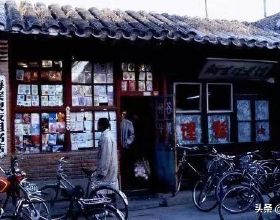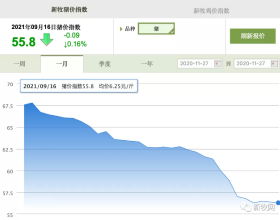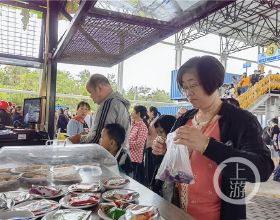金絲楠是中國特有的珍貴木材。代表物種楠木(學名:Phoebe zhennan S. Lee):原稱“楨楠”。大喬木,高達30餘米,樹幹通直。小枝通常較細,有稜或近於圓柱形,被灰黃色或灰褐色長柔毛或短柔毛。葉革質,橢圓形,長7-11釐米,寬2.5-4釐米,上面光亮無毛或沿中脈下半部有柔毛,下面密被短柔毛,聚傘狀圓錐花序十分開展,被毛,每傘形花序有花3-6朵,花中等大,長3-4毫米。果橢圓形,革質、緊貼,兩面被短柔毛或外面被微柔毛。花期4-5月,果期9-10月。
野生或栽培;野生的多見於海拔1500米以下的闊葉林中。主要產於中國四川、湖北西部、雲南、貴州及長江以南省區。據記載,在所有的金絲楠木中,四川的金絲楠材質最佳。屬中國國家二級保護植物,
木材有香氣,紋理直而結構細密,不易變形和開裂,為建築、高階傢俱等優良木材。在歷史上金絲楠木專用於皇家宮殿、少數寺廟的建築和傢俱。金絲楠木中的結晶體明顯多於普通楠木,木材表面在陽光下金光閃閃,金絲浮現,且有淡雅幽香。
金絲楠是一些材質中有金絲和類似綢緞光澤現象的楠木。廣義的金絲楠指楠木顯現金絲的都叫金絲楠,古代金絲楠木按業界傳統說法是指紫楠、楨楠、閩楠。
金絲楠木箱
這是老前輩留下來的有個木箱,是金絲楠木做的,到至今都看不到腐爛,裝衣服從來不長蟲,開啟箱蓋香味特別濃,夏天開啟箱蓋手往裡伸的話都特別涼,這木箱長度有75釐米,寬有50釐米,高有40釐米,可見其鉚釘年代久遠,如今市面上找不到這種鉚釘,屬於老木箱無疑。
歷史上,楠、樟、梓、椆並稱為四大名木,而楠木被冠以其首,足見人們對楠木喜愛程度有多高。在中國建築中,金絲楠木一直被視為最理想、最珍貴、最高階的建築用材,在宮殿苑囿、壇廟陵墓中廣泛應用。根據《博物要覽》楠木有三種:一是香楠,木微紫而帶清香,紋理也很美觀;二是金絲楠(楨楠和紫楠的別名),木紋裡有金絲,是楠木中最好的一種,更為難得的是,有的楠木材料結成天然山水人物花紋;三是水楠,木質較軟,多用其製作傢俱。古代封建帝王龍椅寶座都要選用優質楠木製作,同時還是古代修建皇家宮殿、陵寢、園林等的特種材料,該樹種自清代起就稀有了。晚明謝在杭《五雜俎》提到:楠木生楚蜀者,深山窮谷不知年歲,百丈之幹,半埋沙土,故截以為棺,謂之沙板。佳板解之中有紋理,堅如鐵石。試之者,以署月做盒,盛生肉經數宿啟之,色不變也。
楠木之至美者,向陽處或結成人物山水之紋。木質堅硬耐腐,自古有“水不能浸,蟻不能穴”之說。生長緩慢,而其生長規律又使大器晚成,生長旺盛的黃金階段需要上百年,成為棟樑材至少兩百年以上。 主要產於四川是中國獨有的珍貴木材。明清宮廷皇家用材在四川、貴州等地採集。
金絲楠木被稱為軟木之王,在古代是皇室專用木材,百姓不得見,不過寺廟等地可以破格使用,由於極其珍貴,一般只有皇宮裡才會使用,在和珅的罪證中,就有一條私自使用金絲楠木罪,可見金絲楠木之尊貴,此木箱儲存完整,品相上乘,規格較高,具有極高的收藏價值。
英文翻譯:Kinesia chinensis is a rare wood unique to China. Representative species Zhennan (Phoebe Zhennan S. Lee) : originally named zhennan. Big tree, more than 30 meters high, straight trunk. Branchlets usually finer, angulate or nearly cylindrical, grayish-yellow or grayish-brown pilose or pubescent. Leaves leathery, elliptic, 7 -- 11 x 2.5 -- 4 cm, glabrous above or pilose along lower midvein, densely pubescent below, cymose panicles very spreading, hairy, with 3 -- 6 flowers per umbel, medium large, 3 -- 4 mm long. Fruit elliptic, leathery, appressed, pubescent on both sides or puberulent outside. Flowering from April to May, fruiting from September to October.
Wild or cultivated; Wild species are found in broadleaf forests below 1500 m. Mainly produced in Sichuan, western Hubei, Yunnan, Guizhou and provinces south of the Yangtze River in China. According to records, in all the nanmu gold, sichuan jinshinan material is the best. It is a national second-class protected plant in China.
Wood has aroma, straight texture and fine structure, not easy to deformation and cracking, for architecture, high-grade furniture and other fine wood. Historically, nanmu was used in royal palaces and a few temples for construction and furniture. The crystal in gold nanmu is obviously more than ordinary nanmu, the wood surface is golden in the sun, the gold emerged, and there is a quietly elegant fragrance.
Jinshinan is a few materials in the gold and similar silk luster phenomenon nanmu. Broad jinsinan refers to nanmu show gold wire is called jinsinan, ancient jinsinan according to the industry traditional view refers to purple nan, Zhennan, minnan.
Gold nanmu box
This is doyen stay a wooden cases, is made of gold-rimmed nanmu, to has no decay, clothes never snake, open the box cover special fragrance, summer open the lid to stretch hand is particularly cool, this packing length 75 cm, 50 cm wide, 40 cm tall, old visible the rivet, now on the market can not find the rivet, Belong to old wooden case undoubtedly.
9. Historically, nan, cinnamomum, catalpa and nine were called four famous trees together, and Nanmu was named its first, which shows how high people's affection for nanmu is. In Chinese architecture, golden nanmu has always been regarded as the most ideal, precious and highest architectural material, widely used in palaces, gardens and orchards, altars, temples and tombs. According to the "History of Natural History" there are no three kinds of nan: one is fragrant nan, wood purple with fragrance, texture is also very beautiful; Second, Jinshinan (zhennan and Purple nan alias), wood grain with gold, is the best of nanmu, more rare is that some nanmu materials formed natural landscape figure patterns; 3 it is shui Nan, woodiness is softer, multi-purpose its make furniture. Ancient feudal emperor throne to choose high-quality nanmu production, or the ancient construction of royal palaces, mausoleum, gardens and other special materials, the tree species since the Qing Dynasty was rare. Late Ming Xie Zaihang "Five Zazu" mentioned: Nanmu born Chu shu, deep mountains and valleys do not know the age, 100 zhang of dry, half buried sand, so cut thought coffin, called the sand board. Good plate solution in the texture, as hard as iron. Try, with the department month do box, sheng raw meat after a number of suqi, color is unchanged.
Nanmu to the United States, xiangyang or formed character landscape lines. Wood hard corrosion resistance, since ancient times, "water can not dip, ants can not hole" said. The growth is slow, and its growth law makes the late bloomer, the golden stage of vigorous growth needs hundreds of years, become pillar material at least more than two hundred years. Mainly produced in Sichuan is China's unique precious wood. The Ming and Qing imperial court materials were collected in Sichuan, Guizhou and other places.
Gold-rimmed nanmu, known as the king of the cork, in ancient times was a royal special wood, the people, shall not see, temples and other places used can abnormality, however, due to the extremely precious, generally only the palace will use, in the evidence of ho-shen, sin a secretly use gold-rimmed nanmu, visible gold-rimmed nanmu, the noble, the wooden cases, quality excellent, the specification is high, It has high collection value.















